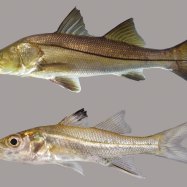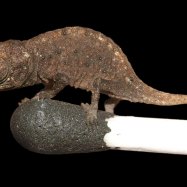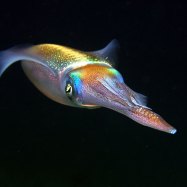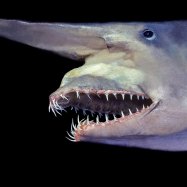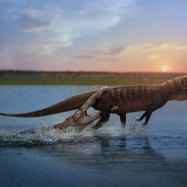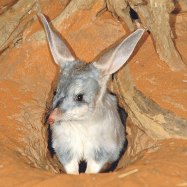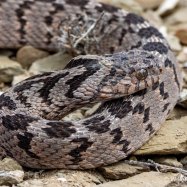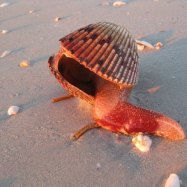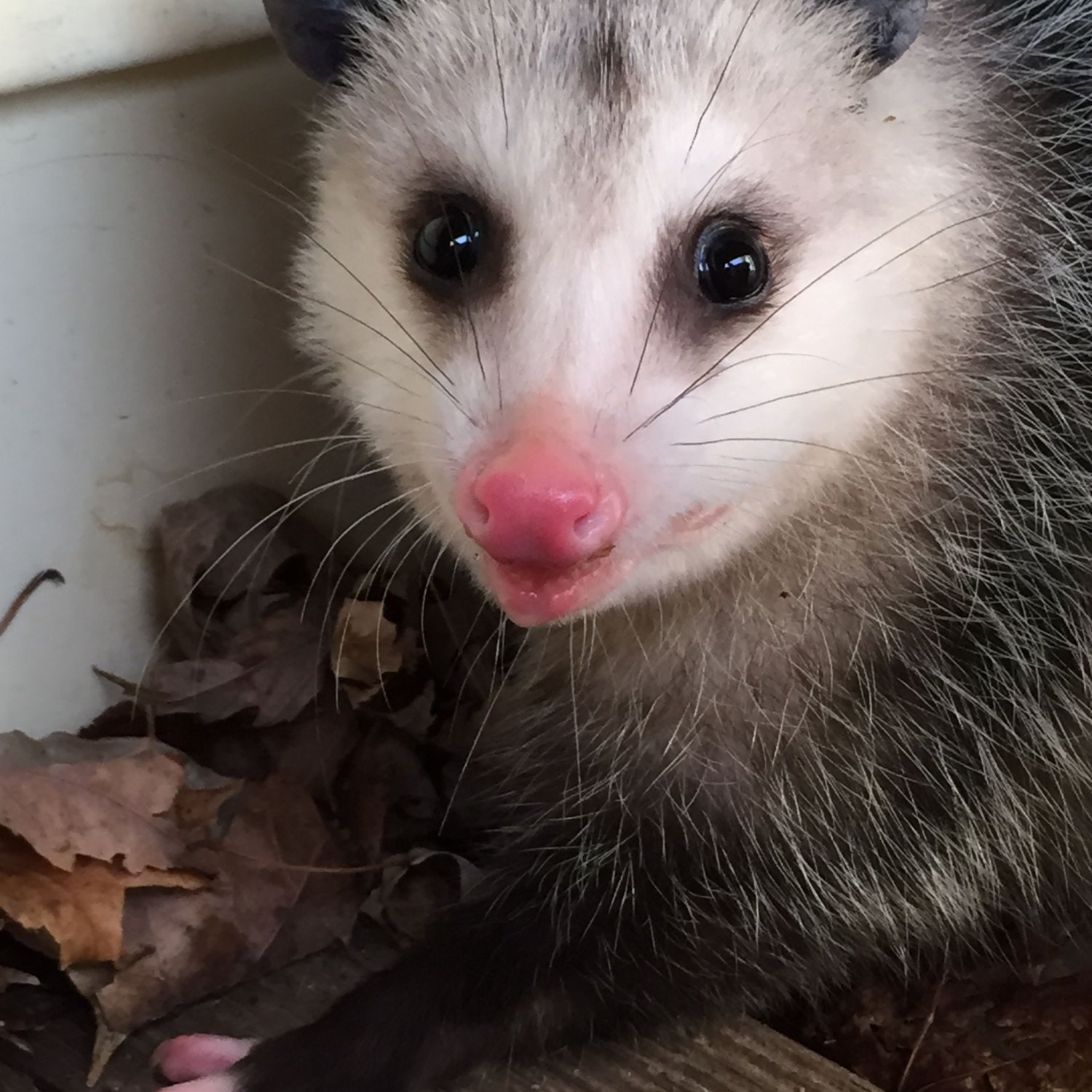
Opossum
13 to 37 inches (33 to 94 cm)
Opossums, also known as possums, are found all over North America and belong to the Didelphidae family. Ranging from 13 to 37 inches in length, these small to medium-sized animals have a distinctive long and sleek body shape. Despite their rat-like appearance, these creatures are skilled climbers and help control insect and rodent populations in their habitats. #Opossums #Wildlife #NorthAmerica #Didelphidae
Animal Details Summary:
Common Name: Opossum
Kingdom: Animalia
Habitat: Forest, grassland, and urban areas
The Fascinating World of Opossums: Misunderstood Creatures of North and South America
When you hear the word "opossum," what comes to your mind? Do you picture a big, scary, rat-like creature? Or maybe a possum laying on its back, playing dead? Whatever images may come to your mind, the fact remains that opossums are some of the most misunderstood animals in North and South America. These furry creatures belong to the animal kingdom under the scientific name Didelphis virginiana and are commonly known as opossums. In this article, we will explore the unique world of opossums, covering their habitat, feeding method, geographical distribution, body shape, and more. By the end of this article, you will gain a newfound appreciation for these incredible animals Opossum.Their Habitat and Feeding Habit
Opossums are highly adaptable animals, able to survive in a variety of habitats such as forests, grasslands, and even urban areas. They are mostly found in North and South America, but they have also been introduced to Australia, New Zealand, and several other countries. In the United States, opossums can be found throughout the country, making them one of the most widespread mammals in North America.One of the most interesting facts about opossums is their feeding habit. They are classified as omnivorous, meaning they eat both plants and animals. This makes them opportunistic feeders, and they will eat almost anything they can find, including fruits, insects, small mammals, birds, and even carrion. This varied diet allows them to thrive in various habitats, giving them an advantage over other animals that have restrictive diets.
Their Distribution and Country of Origin
As mentioned earlier, opossums are mostly found in North and South America. In North America, they can be found from the southern parts of Canada to the northern regions of Argentina, including Central America and the Caribbean Otter. They are also found in several South American countries, including Colombia, Brazil, and Uruguay.The exact origin of opossums is highly debated, with speculation that they originated in South America and migrated to North America through the Panamanian land bridge over three million years ago. This theory is supported by the fact that opossums are only found in the Western Hemisphere and are distantly related to marsupials, which are mostly found in Australia. However, some evidence suggests that they originated in North America and then moved southward.
Their Appearance and Body Shape
Opossums have a unique appearance, with a body shape that sets them apart from other mammals. They are small to medium-sized animals, with a body length ranging from 13 to 37 inches (33 to 94 cm). Their bodies are long, smooth, and slender, with a thick fur coat that varies in color from gray to brown. They have a white face with black eyes, giving them an almost ghost-like appearance.One of the most notable physical characteristics of opossums is their prehensile tail. This means that they can grip and hold onto objects with their tail, much like monkeys do. Their tail is also used for balance when climbing trees or scavenging for food. Opossums also have sharp claws, which they use to dig for food or climb trees. Despite their small size, opossums have a robust and resilient body, thanks to their thick fur and a thick layer of fat under their skin, which acts as insulation.
Their Role in Nature
Many people view opossums as pests or nuisances, but the truth is, they play a crucial role in the ecosystem. As opportunistic feeders, they help to keep the populations of small rodents, insects, and other animals in check, preventing them from becoming overpopulated. They also serve as prey for larger predators such as foxes, coyotes, and owls. Opossums are also known to consume large amounts of ticks, helping to reduce their numbers and the potential spread of tick-borne diseases.Another role that opossums play in nature is that of seed dispersers. As they move around and forage for food, they unintentionally spread seeds from the fruits they consume, aiding in the growth and spread of various plant species. This process is essential for maintaining a healthy and diverse ecosystem.
The Misconceptions about Opossums
As mentioned earlier, opossums are often misunderstood and seen as pests or nuisances. This is largely due to misconceptions and myths about their behavior and habits. One of the most common misconceptions about opossums is that they are dirty and carry diseases, which is untrue. In fact, opossums have a remarkably strong immune system, making them resistant to many types of pathogens, including rabies.Another myth about opossums is that they are vicious and will attack humans. This is not true. Opossums are docile creatures and will usually play dead when threatened. They are not aggressive animals and will only use their teeth and claws as a last resort if they feel threatened or cornered.
The Importance of Protecting Opossums
Despite their important role in nature, opossums face several threats to their survival. The most significant threat comes from humans, through habitat destruction, vehicle collisions, and deliberate killing. Many people falsely perceive opossums as pests and may harm or kill them without understanding their importance in the ecosystem. Additionally, as urbanization increases, opossums face the challenge of adapting to new environments and competing with other animals for food and shelter.It is important to note that opossums are protected by law in some states, and it is illegal to harm or kill them without a permit. Efforts to educate the public about opossums and their role in nature are necessary to dispel myths and promote coexistence with these amazing creatures.
Conclusion
In conclusion, opossums are fascinating creatures with a rich history and an important role in nature. They are highly adaptable, omnivorous animals found in various habitats throughout North and South America. Opossums are not dirty or aggressive, as they are often perceived, and they play a crucial role in controlling populations of small animals and spreading seeds. It is important to protect and appreciate opossums to ensure their survival and maintain a healthy ecosystem. So, the next time you see an opossum, remember to admire and respect these incredible animals.

Opossum
Animal Details Opossum - Scientific Name: Didelphis virginiana
- Category: Animals O
- Scientific Name: Didelphis virginiana
- Common Name: Opossum
- Kingdom: Animalia
- Phylum: Chordata
- Class: Mammalia
- Order: Didelphimorphia
- Family: Didelphidae
- Habitat: Forest, grassland, and urban areas
- Feeding Method: Omnivorous
- Geographical Distribution: North and South America
- Country of Origin: United States
- Location: Throughout North America
- Animal Coloration: Gray with white face and black eyes
- Body Shape: Small to medium-sized with a long, smooth, and slim body
- Length: 13 to 37 inches (33 to 94 cm)

Opossum
- Adult Size: About the size of a domestic cat
- Average Lifespan: 2 to 4 years in the wild, up to 8 years in captivity
- Reproduction: Marsupial
- Reproductive Behavior: Polygynous
- Sound or Call: Hiss, growl, screech, and click
- Migration Pattern: None
- Social Groups: Solitary
- Behavior: Nocturnal
- Threats: Habitat loss, vehicle collisions, hunting
- Conservation Status: Least Concern
- Impact on Ecosystem: Important seed dispersers
- Human Use: No significant human use
- Distinctive Features: Prehensile tail, opposable thumbs
- Interesting Facts: Only marsupial native to North America
- Predator: Large birds of prey, foxes, coyotes, and humans
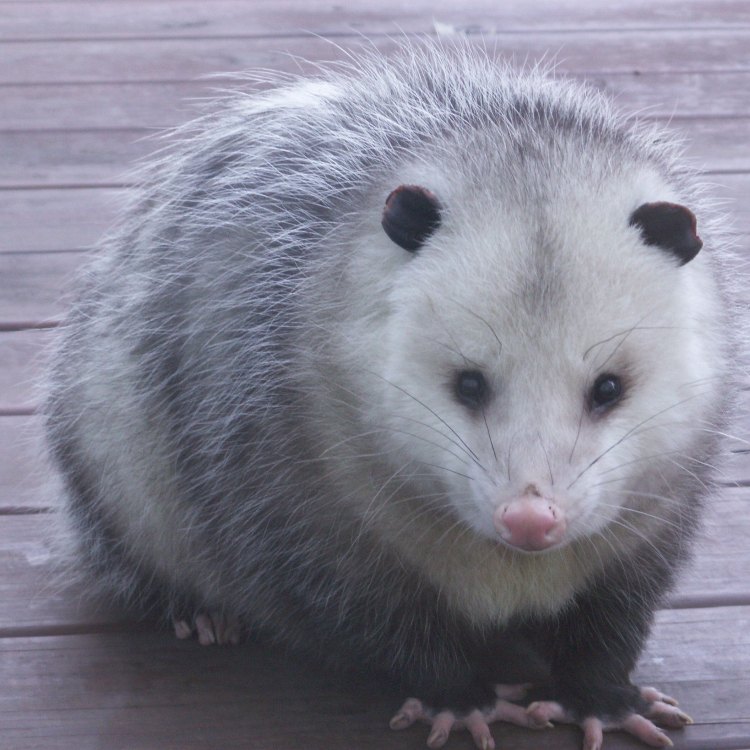
Didelphis virginiana
The Curious and Misunderstood Opossum: Uncovering the Fascinating Nature of North America's Only Marsupial
If you take a closer look at the diverse animal kingdom of North America, you'll likely come across several species that may seem familiar to you – deer, raccoons, squirrels, and skunks, to name a few. But one creature that often goes unnoticed and misunderstood is the opossum. With its rodent-like appearance and nocturnal behavior, the opossum may not seem like a remarkable creature at first glance. However, upon closer examination, you'll discover that this mysterious marsupial has some unique features and behaviors that make it a truly fascinating creature PeaceOfAnimals.Com.Size and Lifespan
The opossum, scientifically known as Didelphimorphia, is a medium-sized mammal that is about the size of a domestic cat. They typically range from 13-37 inches in length, with a weight of 4-14 pounds. However, some larger species of opossums can grow up to 40 inches and weigh up to 15 pounds. They have a pointed snout, long hairless tail, and a grayish-white fur coat with black and white markings.
Despite their relatively modest size, opossums have quite a short lifespan. In the wild, they typically live for 2 to 4 years, while those in captivity can live up to 8 years. This is due to various environmental factors such as habitat loss, vehicle collisions, and hunting (both for food and sport). However, despite these threats, the opossum population remains stable, leading to a conservation status of “Least Concern” according to the International Union for Conservation of Nature (IUCN).
Reproductive Behavior
One of the most unique and interesting characteristics of opossums is their reproductive behavior Orchard Oriole. As marsupials, they give birth to underdeveloped young, known as joeys. Unlike most mammals, they do not have a placenta to nourish the developing fetus. Instead, the joeys are born after only 13 days of gestation and crawl into the mother's pouch, where they continue to develop for an additional 60 days.
Opossums are also considered polygynous, meaning that one male mates with multiple females. The mating season usually occurs from January to July, with the female opossums giving birth to one to three litters per year. The joeys stay in the pouch for approximately three months until they are big enough to leave and ride on the mother's back until they are fully weaned.
Sound and Call
If you've ever come across an opossum, you may have heard their distinctive hissing noise. In addition to hissing, opossums also make a range of other sounds, including growling, screeching, and clicking. These vocalizations are used for communication and as a means of warning predators that they are not to be messed with.
Migration Pattern
Unlike many other animals, opossums do not have any specific migration pattern. They typically have a home range of 50-100 acres and do not venture too far from their home. However, when resources are scarce, they may move to another area in search of food and shelter.
Social Groups and Behavior
Opossums are solitary animals, meaning they live and hunt alone. They do not form social groups or interact with other opossums, except during the mating season. As nocturnal animals, they spend most of their days sleeping in their dens and come out at night to forage for food.
Behaviorally, opossums are considered opportunistic omnivores. This means that they will eat a wide variety of foods, including fruits, insects, small animals, and even carrion. They also have a unique defense mechanism called “playing possum” where they play dead by curling up, drooling, and emitting a foul-smelling odor. This helps them survive attacks from predators, as many animals are deterred by the sight and smell of a seemingly dead animal.
Threats and Impact on Ecosystem
While opossums may seem small and harmless, they face several threats to their survival. One of the most significant threats is loss of habitat due to urbanization and human development. As urban areas expand, the natural habitats of opossums are destroyed, forcing them to adapt to living in suburban and urban environments where they are often considered pests.
Other threats include being hit by vehicles and hunting. Opossums are hunted for their fur, meat, and as a means of pest control. However, these threats do not seem to impact their overall population significantly, and they remain an essential part of the ecosystem.
In fact, opossums have an important role in the ecosystem as seed dispersers. As they roam around foraging for food, they often consume a variety of fruits and plants and then spread the seeds through their feces. This helps to regenerate plant life and maintain biodiversity in their habitats.
Human Use and Distinctive Features
While there is no significant use of opossums by humans, they do have some unique features that make them stand out. One of their most distinctive features is their prehensile tail, which means they are able to grasp and hold objects with it. This trait helps them to navigate through trees and branches and provides them with balance while climbing.
Opossums also have opposable thumbs on their hind feet, making them one of the only few mammals with this feature. This allows them to grasp and manipulate objects, making them excellent climbers and foragers.
Interesting Facts about Opossums
Apart from their distinctive features and behaviors, opossums have some other interesting facts that make them stand out among other mammals:
1. Only Marsupial Native to North America
The opossum is the only marsupial species native to North America. This means they are the only mammal that carries their young in a pouch.
2. Can Eat Almost Anything
Opossums have a remarkably diverse diet and can eat almost anything they come across, including plants, insects, small animals, and even garbage.
3. Help Control Tick Populations
Opossums have a high tolerance for the notorious Lyme disease-carrying tick. A single opossum can eat up to 5,000 ticks in one season, making them important natural tick control agents.
Predators of Opossums
While opossums may seem like small, harmless creatures, they do have several predators in the animal kingdom. Large birds of prey, such as owls and hawks, are known to prey on opossums. Other predators include foxes, coyotes, and, sadly, humans. This is due to their perceived nuisance behavior and the false belief that they are carriers of diseases such as rabies.
In Conclusion
In a world filled with fascinating creatures, the opossum often goes unnoticed and misunderstood. However, upon closer inspection, these unusual marsupials have some unique features, behaviors, and roles in the ecosystem that make them truly remarkable. As we continue to learn more about these curious creatures, it is essential to recognize their important role in maintaining the delicate balance of the natural world. So next time you come across an opossum, take a moment to appreciate their fascinating nature and the vital role they play in the ecosystem.
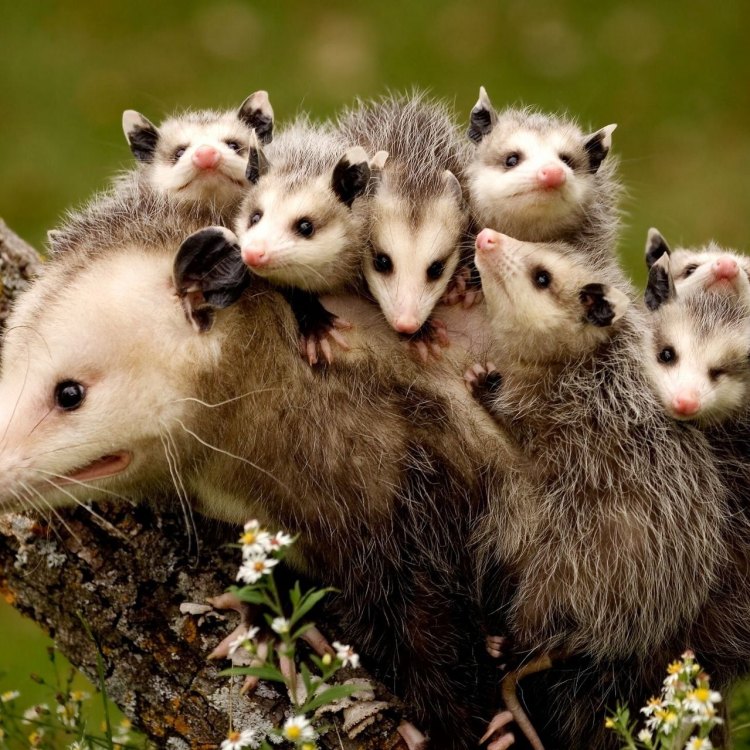
The Fascinating World of Opossums: Misunderstood Creatures of North and South America
Disclaimer: The content provided is for informational purposes only. We cannot guarantee the accuracy of the information on this page 100%. All information provided here may change without prior notice.

